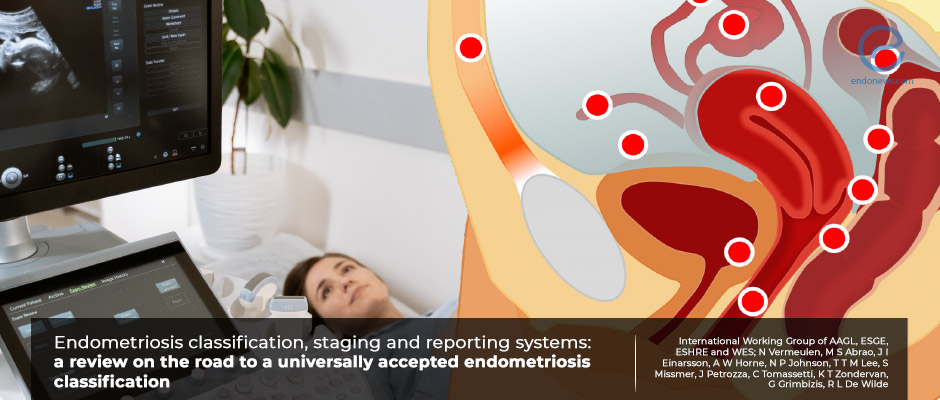International Working Group's review on endometriosis classification systems
Apr 19, 2022
Endometriosis classification systems evaluated by experts
Key Points
Highlights:
- Following the first suggestion for a classification system for endometriosis in the 1970s, various publications for endometriosis classification, staging, and reporting systems emerged, but there is still no international agreement.
Importance:
- Published classification or staging systems in endometriosis have focused on the diagnosis and preoperative assessment, surgical description or staging, to the prediction of surgery and treatment outcomes for pain and infertility.
- Thus, an international consensus is needed for better clinical management of endometriosis.
What’s done here:
- This is a comprehensive review of publications found by PubMed literature search for endometriosis classification, staging, and reporting systems between the years 1973 and 2021.
Key results
- For a widely accepted classification system, it is important that it is accessible, validated, reliable, and reproducible.
- The current endometriosis classification systems have not been thoroughly assessed on these issues.
- There is a need for a universally accepted classification or descriptive system for endometriosis, defining subgroups and more importantly guiding the therapeutic options for women with pain and/ or infertility.
- This will facilitate endometriosis research by unifying patient subgroups assisting the development of prognostic and predictive tools.
Lay Summary
International Endometriosis Working Group including AAGL, ESHRE, ESGE, and WES published a comprehensive review on endometriosis classification, staging, and reporting systems in a recent issue of the journal named "Facts, Views & Vision in Obstetrics and Gynecology".
Classification and staging systems have improved clinical management, especially in oncology, rheumatology, and Parkinson’s disease. Following the first suggestion for a classification system for endometriosis in 1973, various publications for endometriosis classification, staging, and reporting systems emerged, but there is still no international agreement even on the description of the disease.
This comprehensive review evaluated the publications revealed by PubMed literature search for endometriosis classification, staging, and reporting between1973 and 2021. The PubMed literature identified and evaluated 22 classifications, staging or reporting systems, and included them in this report. The 46 studies reporting an evaluation of the different systems are also listed. Published classification or staging systems in endometriosis have focused on diagnosis (including symptoms) and preoperative assessment, surgical description, or staging, to the prediction of surgery and treatment outcomes for pain and infertility. Among the studies reviewed, most systems showed no or very little correlation with patient outcomes. It was found that the surgical value of the ENZIAN classification for description and pre-operative assessment of deep endometriosis, UBESS for predicting laparoscopic difficulty, and the Endometriosis Fertility Index a good predictor for natural conception after endometriosis surgery.
Since 1973, various classification systems for endometriosis have been published, and so far 22 different systems have been developed. Some of them focus on symptoms, while others document the surgical observations, or predict the outcomes after treatment. Classification systems need to be evaluated in a research project to confirm their validity in clinical management. Of the 22 classification systems evaluated in this review, few have been evaluated for the purpose for which they were developed.
Research Source: https://pubmed.ncbi.nlm.nih.gov/34672508/
endometriosis classification ENZIAN UBESS endometriosis fertility index AAGL ESGE WES

